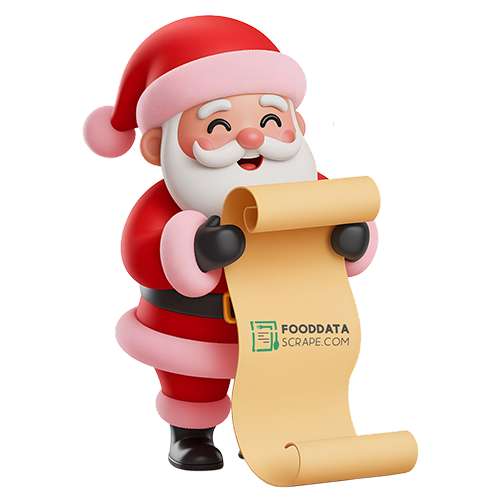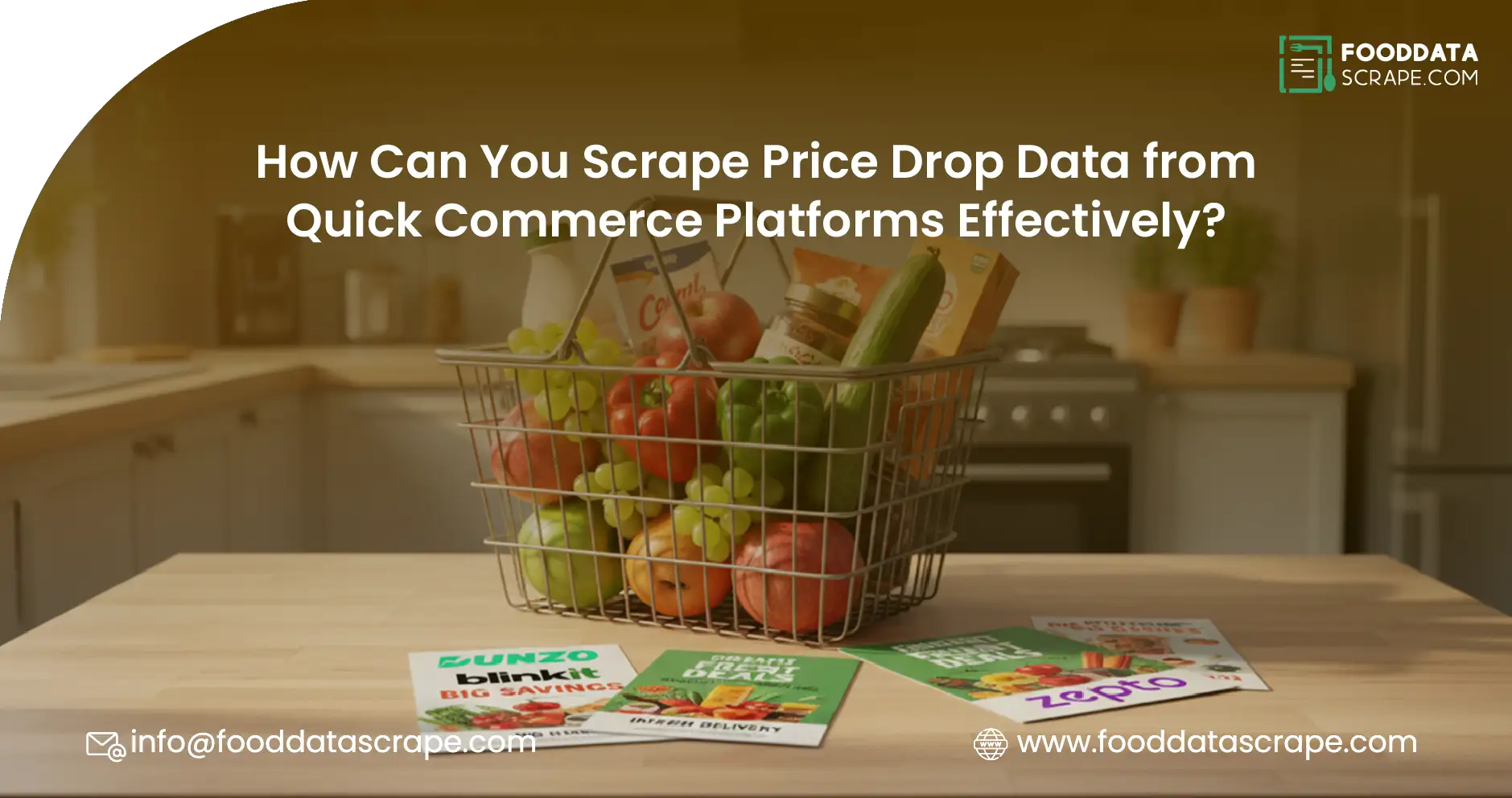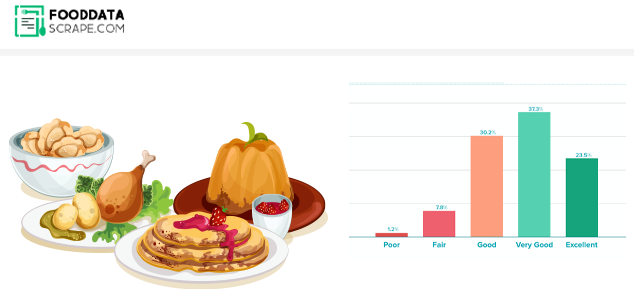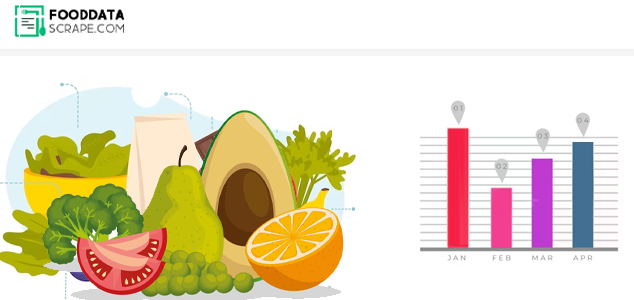Introduction
In the rapidly evolving e-commerce landscape, quick commerce (Q-Commerce) platforms have transformed the way consumers shop for groceries, electronics, and everyday essentials. With promotions, flash sales, and dynamic pricing becoming the norm, businesses need to stay ahead of market trends to remain competitive. Leveraging technology to Scrape Price Drop Data from Quick Commerce Platforms provides retailers, analysts, and marketers with invaluable insights into pricing trends, consumer behavior, and product demand.
By using advanced tools to Extract Quick Commerce Products Prices Drop Data, companies can track real-time changes in product prices, monitor competitor strategies, and make data-driven decisions. This process eliminates the need for manual monitoring, enabling businesses to optimize pricing, marketing campaigns, and inventory management more efficiently.
Importance of Scraping Price Drop Data
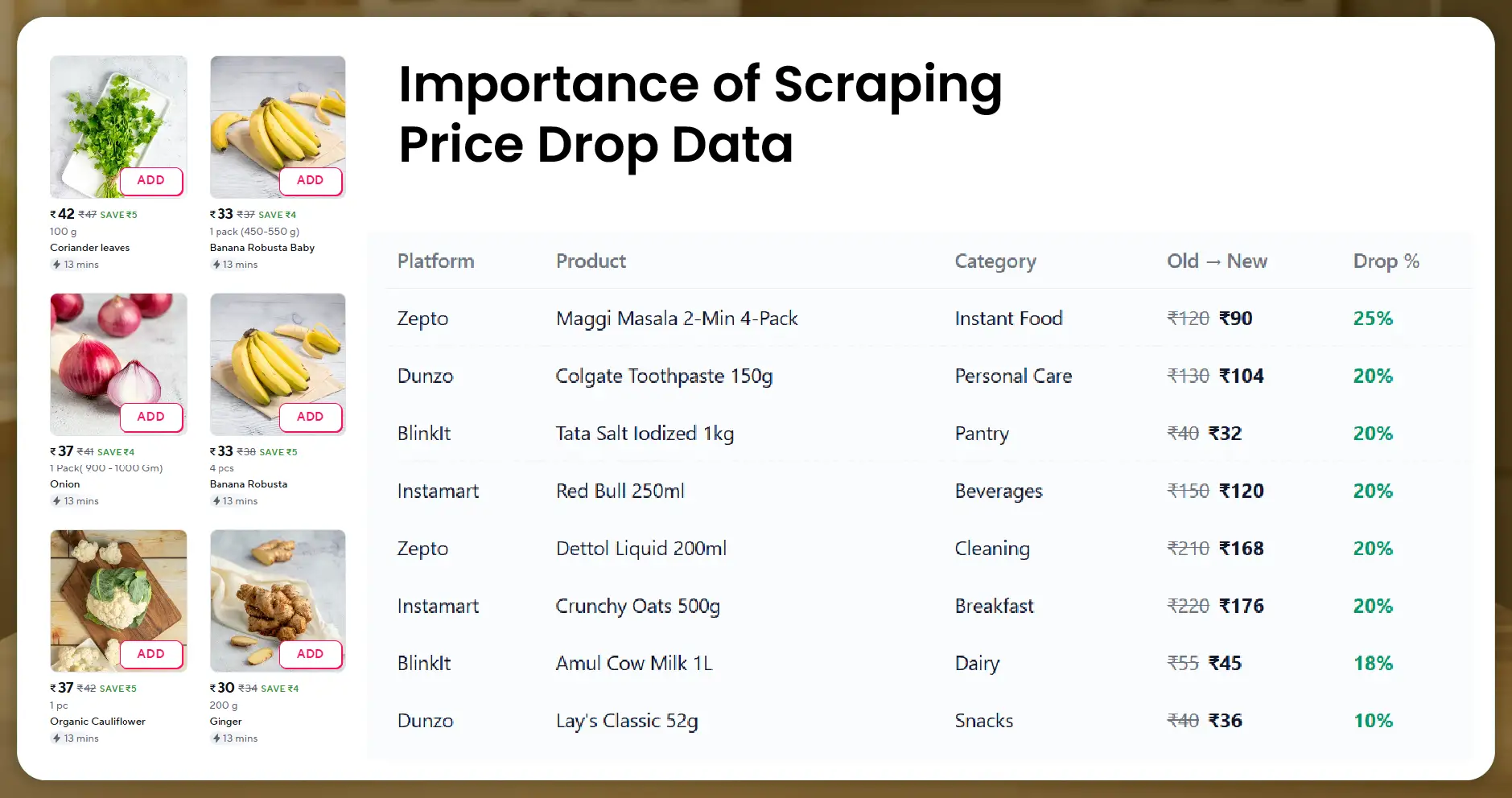
Price plays a critical role in influencing consumer purchasing decisions. Quick commerce platforms frequently adjust prices based on demand, stock availability, or promotional events. Without access to timely and structured pricing information, businesses risk losing customers to competitors who offer better deals. Here, Web Scraping Quick Commerce Price Drop Data becomes essential, as it allows companies to gather accurate, up-to-date pricing information from multiple Q-Commerce platforms.
The insights derived from price drop data can be leveraged for several strategic purposes:
- Identifying popular products experiencing price reductions
- Understanding competitor discount strategies
- Monitoring seasonal pricing trends
- Optimizing promotional campaigns and flash sales
- Improving inventory allocation to match high-demand discounted items
How Quick Commerce Price Drop Data Scraping Works?
Quick commerce platforms like BlinkIt, Zepto, Dunzo, and others offer thousands of products with rapidly changing prices. Scraping this data requires a structured approach using APIs or web scraping tools designed specifically for real-time extraction.
- Data Identification - The first step involves identifying the relevant product categories, pricing fields, and discount information available on the Q-Commerce platforms. The goal is to extract complete pricing histories, including original prices, discounted prices, and promotional offers.
- API or Web Scraping Tool Integration - Using a Quick Commerce Products Prices Drop Data Scraping API, businesses can automate the extraction process. These APIs are designed to handle dynamic content, capture real-time updates, and deliver structured datasets compatible with analytics platforms.
- Data Cleaning and Structuring - Extracted data often contains noise or unstructured elements. Using data cleaning techniques, the information is organized into structured formats, such as JSON or CSV, creating a Quick Commerce Price Drop Dataset suitable for analysis.
- Analysis and Reporting - With structured data, businesses can track pricing trends over time, visualize product performance, and generate actionable insights. Tools like dashboards and BI platforms help monitor flash sales, competitor discounts, and seasonal price drops effectively.
Key Benefits of Scraping Price Drop Data
Businesses that leverage Extract Discounted Product Prices from Q-Commerce Platforms gain multiple advantages:
- Competitive Pricing Insights: Understand competitor pricing strategies and offer competitive deals.
- Real-Time Market Monitoring: Stay updated on promotions, flash sales, and discounts as they happen.
- Consumer Behavior Analysis: Identify products with high price sensitivity and adjust marketing strategies.
- Inventory Optimization: Forecast demand for discounted products to reduce stockouts or overstocking.
- Enhanced Decision Making: Enable data-driven decisions for pricing, promotions, and product launches.
Sample Table: Original vs. Price Drop Data
| Product Name | Platform | Original Price (₹) | Discounted Price (₹) | Price Drop (%) |
|---|---|---|---|---|
| Organic Milk 1L | BlinkIt | 120 | 100 | 16.7% |
| Multigrain Bread | Zepto | 80 | 65 | 18.8% |
| Almonds 500g | Dunzo | 450 | 380 | 15.6% |
| Fresh Eggs 12 pcs | BlinkIt | 90 | 75 | 16.7% |
| Peanut Butter 1kg | Zepto | 350 | 300 | 14.3% |
This table demonstrates how businesses can track price drops efficiently across multiple Q-Commerce platforms, helping in pricing strategy, promotion planning, and inventory forecasting.
Use Cases of Price Drop Data Scraping
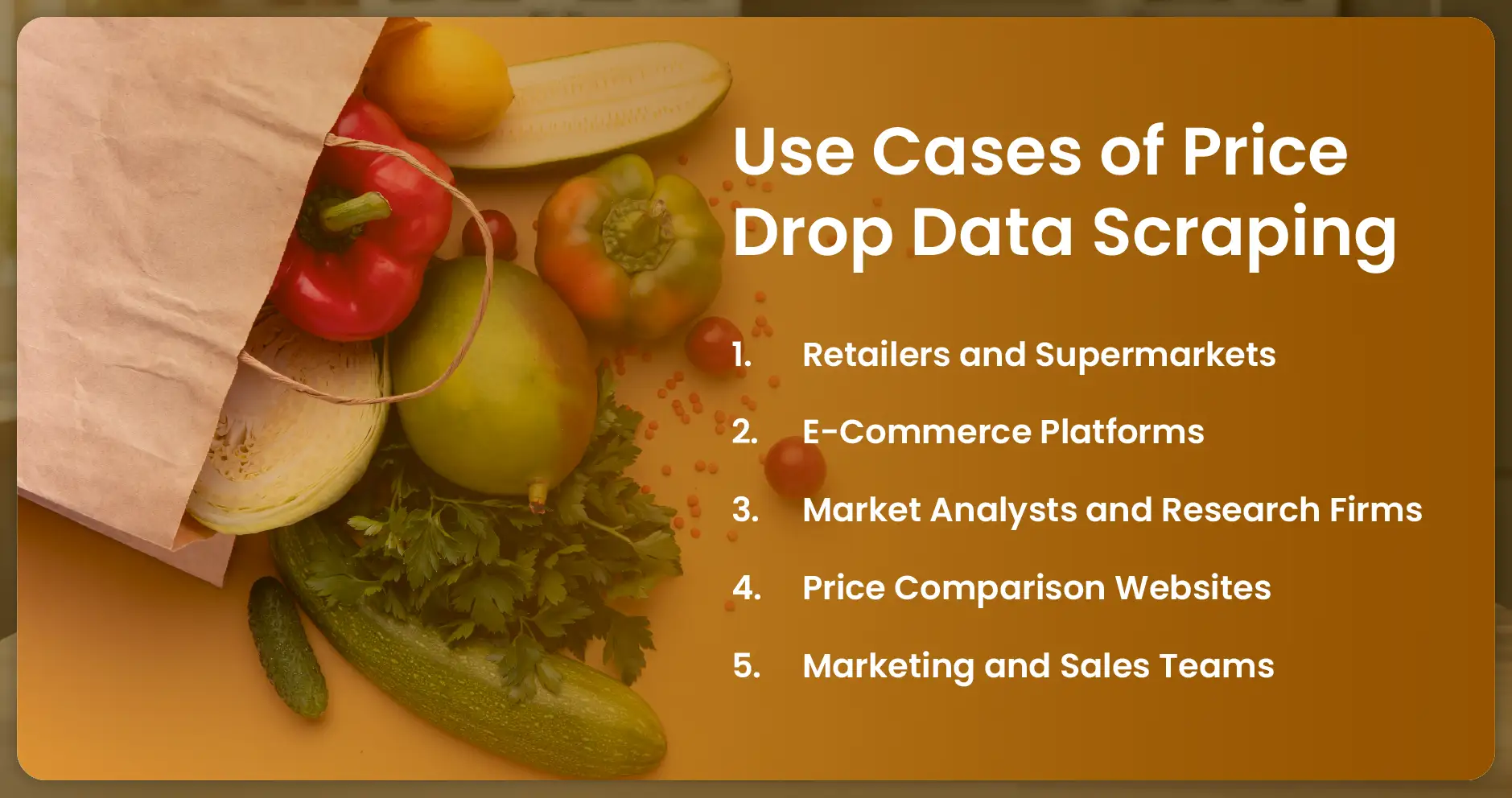
- Retailers and Supermarkets - Retailers can use Quick Commerce Product Price Drop Data Scraping to monitor competitor prices and ensure their own pricing strategies remain competitive. By analyzing historical and current discounts, they can plan promotional campaigns and price matching strategies effectively.
- E-Commerce Platforms - E-commerce marketplaces can leverage scraped price drop data to optimize product listings, highlight discounts, and improve conversion rates. Scrape Quick Commerce Offers, Discounts & Price Changes to display real-time deals, attracting more consumers.
- Market Analysts and Research Firms - For analysts, access to Quick Commerce Datasets enables trend analysis, market research, and forecasting. Price drop trends can indicate shifts in consumer demand, helping businesses make informed investment decisions or plan product launches.
- Price Comparison Websites - Price comparison platforms benefit directly by integrating Quick Commerce Products Prices Drop Data Scraping API into their systems. This ensures users receive accurate, up-to-date information on discounted products across multiple platforms, enhancing user engagement and trust.
- Marketing and Sales Teams - Marketing teams can use price drop data to run targeted campaigns, send personalized notifications, and promote high-demand discounted products. Accurate data ensures campaigns are relevant and timely, increasing sales effectiveness.
Stay ahead of the competition—let us help you track every price drop on quick commerce platforms!
Technical Considerations for Effective Scraping
To successfully Scrape Price Drop Data from Quick Commerce Platforms, businesses should consider the following technical aspects:
- Handling Dynamic Web Pages: Many Q-Commerce platforms use dynamic loading for product listings and prices. Advanced scraping tools or headless browsers are required to capture real-time information.
- Data Accuracy and Validation: Scraped data must be verified for accuracy to ensure reliable insights. Implementing checks and validation mechanisms is essential.
- Rate Limiting and Compliance: Scraping should respect platform policies and avoid overloading servers. Complying with terms of service is critical for legal and operational reasons.
- Data Storage and Integration: Structured data should be stored in scalable databases and integrated with analytics tools for easy visualization and reporting.
Advanced Analytics from Price Drop Data
Beyond simple price tracking, advanced analytics can be applied to Web Scraping Quick Commerce Price Drop Data:
- Trend Analysis: Identify which products frequently receive discounts and the typical magnitude of price drops.
- Demand Forecasting: Use historical discount patterns to forecast future sales and inventory needs.
- Customer Segmentation: Analyze which products attract the most price-sensitive customers.
- Competitive Benchmarking: Compare price drop strategies across multiple Q-Commerce platforms to refine pricing models.
Challenges in Scraping Q-Commerce Price Data
Despite its benefits, scraping quick commerce price data presents several challenges:
- Frequent Platform Updates: Websites frequently change layouts and APIs, requiring constant maintenance of scraping scripts.
- High Volume of Data: Large product catalogs demand efficient data processing and storage solutions.
- Legal Restrictions: Businesses must ensure scraping complies with platform terms and local regulations.
- Dynamic Pricing Algorithms: Prices change frequently due to AI-driven dynamic pricing, making real-time tracking essential.
Future of Quick Commerce Price Drop Data Extraction
The future of services to Extract Discounted Product Prices from Q-Commerce Platforms is promising, with AI, machine learning, and predictive analytics playing a central role. Businesses can leverage historical price drop data to predict future discounts, optimize inventory, and improve pricing strategies. Integration with mobile apps and dashboards enables real-time alerts on price changes, empowering businesses to act immediately and maximize opportunities.
Additionally, cloud-based solutions for data scraping and storage will ensure scalability and reliability for businesses of all sizes.
How Food Data Scrape Can Help You?
- Real-Time Price Monitoring: We provide automated scraping of price data from multiple Q-Commerce platforms, ensuring you always have the latest information.
- Discount & Offer Tracking: Our services capture all price drops, promotions, and flash sale details, allowing you to monitor competitor strategies effectively.
- Structured Data Delivery: Extracted data is delivered in clean, organized formats like JSON or CSV for easy integration into analytics tools or dashboards.
- Customizable Scraping Solutions: We tailor scraping setups to track specific products, categories, or platforms based on your business needs.
- Actionable Insights: By analyzing scraped price data, you can optimize pricing, forecast demand, and make data-driven business decisions.
Conclusion
In today’s fast-paced retail ecosystem, staying ahead of pricing trends is essential for success. By using tools to Web Scraping Quick Commerce Data, businesses can monitor discounts, analyze consumer behavior, and optimize strategies across multiple platforms. Leveraging a Quick Commerce Data Scraping API ensures automated, real-time access to price drop information, while Quick Commerce Data Intelligence Services provide actionable insights for strategic decision-making.
The ability to scrape and analyze price drop data not only improves competitiveness but also enhances customer satisfaction by offering timely deals. By integrating these insights, businesses can maintain a robust presence in the Q-Commerce sector, maximize sales, and build data-driven strategies for sustained growth.
Are you in need of high-class scraping services? Food Data Scrape should be your first point of call. We are undoubtedly the best in Food Data Aggregator and Mobile Grocery App Scraping service and we render impeccable data insights and analytics for strategic decision-making. With a legacy of excellence as our backbone, we help companies become data-driven, fueling their development. Please take advantage of our tailored solutions that will add value to your business. Contact us today to unlock the value of your data.

